Team Size: 7 | Project Duration: 6 weeks | Role: UX Designer
Possible Use Cases:
Completed prototype could be handed off to a R&D team at GM.
Tools Used:
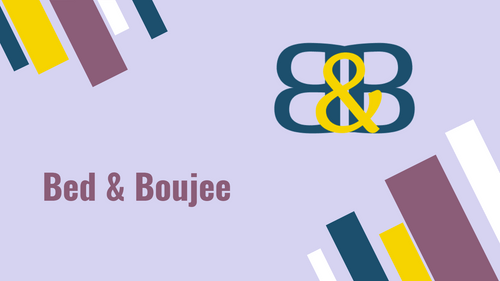
I took a class on Agile Product Management. In this class we covered the Agile methodology and were introduced to common tools and practices. The goal of the course was to be able to create a product and take it from conception to completion. For our project, my team looked into designing a piece of heated outerwear with an accompanying app. We noticed a gap in the market for heated outerwear. There is a large market for heated blankets and weighted blankets. There is also a large market for outerwear such as jackets and snuggies. We hypothesized that there would be an opening in the market for individuals searching for heated jackets. We searched for similar products, and we found only a few options. Milwaukee Tool produces a jacket, but it is intended for workers and not for home use. Also, the jacket was entirely manual with no mobile application to accompany it. Our product needed to be just as comfy for inside wear as a blanket, but still wearable outside on a cold day. We also needed to ensure that users could use an app to personalize their experience.
In my Agile Product Management course, I was assigned to a team of seven people. We had to use the Agile methodology to create a product within six weeks. We functioned as a scrum team meaning we had defined roles as a scrum master, product owner, and developers. For this project, I worked as a developer. We held six sprints that were each one week long. Our group was required to hold daily standups and we held weekly stakeholder meetings with our class. We worked to create a heated outerwear prototype suited for outdoor use and lounging. This heated outerwear would be accompanied by an app prototype. The focus of this class was not on creating a flawless product; rather, for the students to learn how to work in a scrum team while applying the Agile methodology.

We also did market research and analyzed our competitors. There were a few competitors that stood out for their physical jacket products. Milwaukee Tool and ORORO have heated winter jackets with roughly 8-10 hour battery life. Gamma Jacket created an all-climate jacket with a battery that can last from 4 - 40 hours depending on the power bank and heat settings. Milwaukee tool markets to blue-collar workers who need to stay warm at work. ORORO and Gamma both market to the outdoor explorer crowd. They all target men and people who are physically active. We decided to focus our attention on creating a product designed for women and for homebodies. Also, none of these products use an app of any kind. This is not necessarily a bad thing as they can be easily controlled manually. However, we want to give our users complete control over temperature control and comfort settings. Two competitors we found using mobile apps were MW Connect and Volt. Both of these are dated apps with a very simple designs and functionality. We want to elevate our app to be a one-stop-shop for everything involving our product.
With a focus on Lean, we worked in short one-week sprints with our scrum teams. Each sprint lasted for one week with 5 workdays in each. Our class met three times a week and the team met twice outside of class. Each sprint ended with our team giving our shareholder presentation to our professor and classmates. After we finished our presentations, we would also plan our next sprints. Every week we set a detailed sprint goal. We then went on Jira and took on tasks and decided how many story points we would take on. The tasks were then divided up by team members. We would complete our individual work by Tuesday so the group could then review and make changes for Wednesday. On Wednesday we would fix any last-minute issues and then work on creating our shareholder presentations.
The active sprint items we assigned each week were created at the beginning of the project. Our team wrote up user stories with clear acceptance criteria. We wrote user stories for users, developers, stakeholders, and product owners. Each of these was assigned a point value based on the number of hours we assumed it would take to implement. These ranged from one hour to complete up to eight hours. We then added all of these into our Jira backlog. Some of these user stories related to the physical jacket while others were about the companion application we were designing.

In this sprint, my team took on six backlog items for a combined load of 18 story points. Our sprint goal was to define the target users, stakeholders, and roles of the developers. We also wanted to outline the design specs for our product. We conducted user research and created a user persona for our target consumer. We also broke our seven-person team into two teams. One focused on the jacket while the other worked on the app.
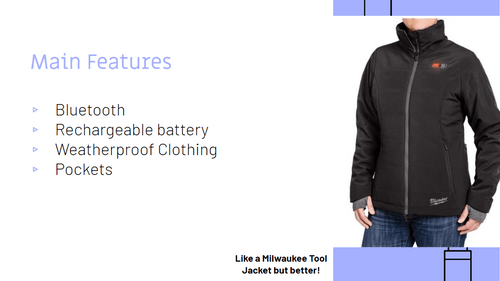

In this sprint, my team took on five backlog items for a combined total of 29 story points. Our sprint goal was to conduct more research and also create a sitemap for the app. Our research allowed us to approximate the price breakdown of our jacket. We also created preliminary sketches for the jacket. I made the sitemap for our app and worked with my team on wireframes. During our stakeholder meetings, we were told to address uncovered edge cases not included in our sitemap.

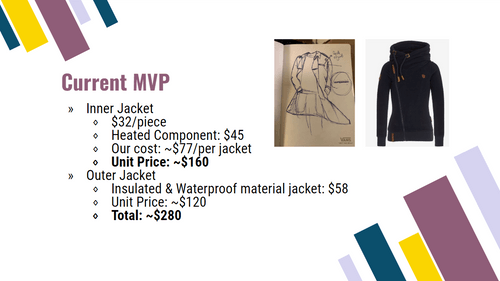
During this sprint, my team took on ten backlog items for a combined total of 29 story points. Our sprint goal was to create low-fidelity wireframes for all required screens and to apply the brand to the app. During this sprint, I worked on choosing our color palette and creating our logo inspired by the logos of designer fashion houses. Our team created more pages for our wireframes including a location tracking page that was not in our sitemap. We also refined sketches for the jacket.
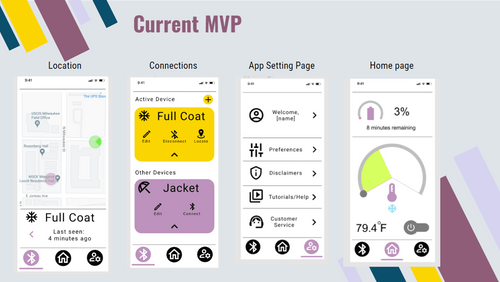
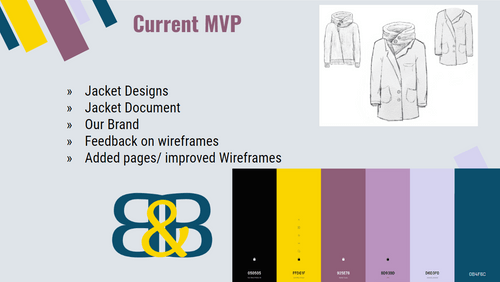
During this sprint, my team took on seven backlog items for a combined total of 27 story points. This sprint involved a pivotal shift for our team. We decided to recombine into a single team and focus on the app. There was simply not enough work for the jacket team to complete since we were not creating a physical prototype for it. Our sprint goal was to swarm and complete high-fidelity wireframes for the app and get feedback on our designs. I worked on creating a notification pop-up and began work on the login/logout sequence. Our team completed all pages in our sitemap and finished the jacket pairing sequence.
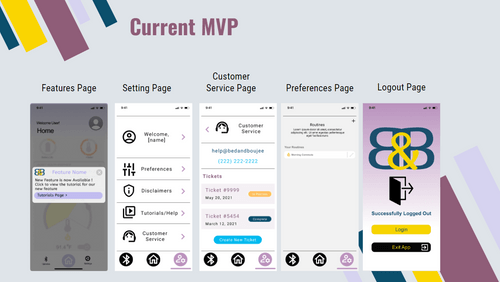
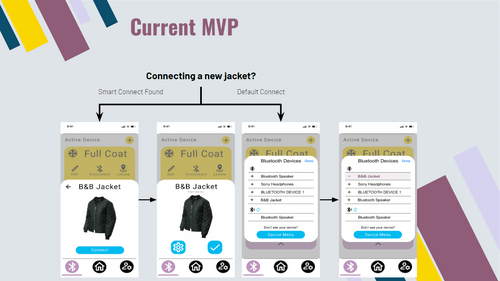
In this sprint, our team took on eight backlog items for a total of 26 story points. Our sprint goal was to iterate on our current app design to improve UI elements and make improvements to visual consistency. During this sprint, I finished the login/logout sequence for the app. Our team redesigned the bottom navigation to improve usability and update the icons. Text and images were updated to stay consistent across all pages. With these changes the high-fidelity app prototype was complete.
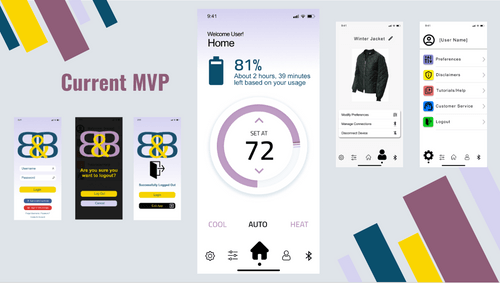
For our final sprint, my team took on three backlog items for a total of 27 story points. Our sprint goals for this week were to create a completed V1 of our app with documented design improvements and plans for future add-ons. We also needed to create the final jacket design and a final bill of materials for the jacket. I worked on turning our high-fidelity wireframes into an interactive Figma prototype. As can be seen below, our final bill of materials comes down to approx. $112 to create the jacket. Finally, our future product improvements and the current prototype is in ready condition to be handed off to a future product team. Finally, my team worked on a final presentation to give our stakeholders.
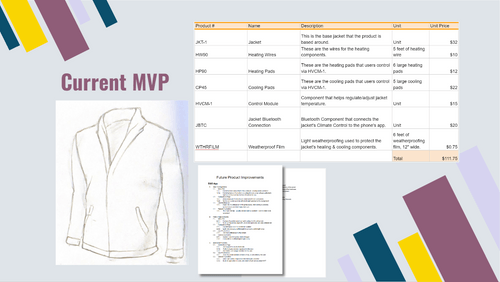
We faced many challenges due to inexperience. The majority of members of our team had never used Figma before. We were forced to keep designs simple at first and use placeholder images until we learned how to use the program. We also faced challenges working in an Agile project team using Jira. After about three weeks we became proficient in all our tools. We also naively decided to split our team into two initially. We believed it would be more efficient to have one group focus on the physical jacket and one group on the app. This proved difficult due to the uneven workloads and difficulty managing two teams. By week three we rejoined as one team and became more efficient and cohesive.
.png)
For this project, we managed to complete all final deliverables. We provided two physical products. We had a high-fidelity app prototype and a final design for the jacket to turn in. We also submitted documentation for both the jacket and the app. For the jacket, we included the Bill of Materials and a Jacket Design Overview. For the app, we included a document for Future Product Improvements. We also included Pairing Instructions and a list of FAQs. These were all completed along with a final presentation that was given in front of our class. Despite early hiccups, my team submitted all required work and received an A as our final grade on the project.
I learned so much in this project. I learned how to use so many new tools. I had never used Jira or Figma before this project. By the end of our development period, I became proficient and comfortable using both of these programs. I also learned the Agile development process. I learned how to fulfill my role as a developer on the Agile team. I also gained experience working with larger teams and holding teammates accountable. Throughout the project, we also learned to better define our scope. We started with a bunch of grand ideas and managed to form those into actual deliverables.